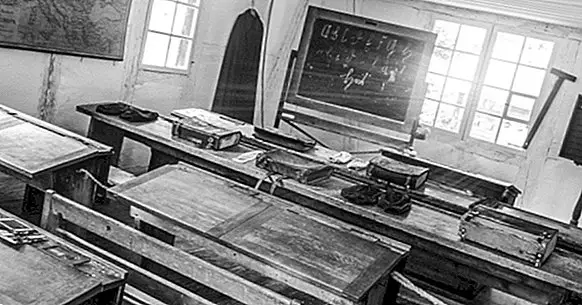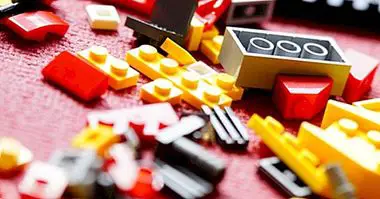Traditional pedagogical model: history and theoretical-practical bases
Educational systems and the way in which they are developed and applied is a traditional topic of debate involving both pedagogy and psychology, philosophy and even politics.
But nevertheless, There is a model that remains despite the passage of time and the many criticisms: the traditional pedagogical model . In this article we will review the history and characteristics of this educational system, as well as its main advantages and disadvantages.
- Related article: "The 18 types of education: history, characteristics and classification"
What is the traditional pedagogical model?
Also know as traditional teaching model or traditional educational model, the traditional pedagogical model is characterized by the marked difference of roles between the student and the teacher . In this type of educational system the student is a passive receiver of information, while the whole weight of the educational process falls on the teacher, who must be an expert in the subject.
Despite the antiquity of this, it reached the peak at the time of the Industrial Revolution, where the traditional pedagogical model It stood out for its easy application and for allowing the possibility of standardizing knowledge , so that a single teacher could take care of the education of a large number of students.
These were some of the reasons why this system acquired such fame that it became the reference educational model, which remains to this day and is the one that is still implemented in the vast majority of educational centers worldwide, regardless of the academic degree.
Despite its popularity in times past, the traditional pedagogical model is not exempt from criticism . With the passage of time, both students and the professors' bodies themselves, claim that this has become obsolete; being considered as a predictable model, little stimulating and that needs an urgent adaptation to the new times.
Development and historical journey
The pedagogical model in which a scholar or expert in a series of knowledge transmitted his knowledge to a series of selected students goes back to the old academies of the High Middle Ages.
Throughout this historical stage, knowledge was restricted only to the Christian community, specifically to the monks. So this educational system was characterized by having a strong religious and moral base.
During a long period of time, the educational traditions were limited to the religious class and it was not until the eighteenth century that there was a first educational revolution.
This revolution came from the hand of the one who, up to now, has been considered the father of modern education: John Amos Comenius . This philosopher, pedagogue and theologian of Czech origin created a new educational reform that soon spread throughout Europe and aroused the interest of all governments for the education of his people.
As a result of this revolution numerous theories, systems and teaching methods arose, so that, with the aim of grouping, unifying and generalizing these ideas, the first chair of pedagogy was created; developed by the University of Halle in Germany, in the year 1770.
Among the theorists of this era are Joseph Lancaster, creator of the monitorial or mutual teaching movement and Johan Heinrich Pestalozzi, who applied the ideals of the Enlightenment movement to pedagogy.
Finally, with the arrival of the Industrial Revolution, governments saw in the traditional pedagogical method an opportunity to transmit both education and the values they considered appropriate to a large number of people at the same time, for which numerous schools and centers were created education that facilitated the expansion of a universal education.
As we mentioned before, the ease of application of this system and the possibility of offering education to a large part of the population converted the traditional education model as a reference system, which led to its standardization and application in the vast majority of schools.
This standardization that occurred at the end of the 19th century still remains today, with the education system being the most practiced in the world.
What are its main characteristics?
As described at the beginning of the article, The main characteristic of the traditional pedagogical model is that it is based on a basis of transmission and reception of information and knowledge .
According to this model, the best method of education is one in which the teacher transmits his knowledge directly to his students, which constitute a passive element in the learning process.
In the traditional pedagogical model, the weight of the transmission of education falls mainly on the figure of the teacher, who must generate their own teaching strategies and present their knowledge to the student.
However, there are other features that distinguish the traditional pedagogical model. These include:
- The teacher should not only be an expert in his field, but should also be able to transmit information effectively.
- The function of the students is to try to understand and memorize the information.
- The student's main learning tool is memory.
- The way in which students settle knowledge is through practice and repetition.
- Self-discipline is the main requirement for students.
- The exams and the evaluative tests allow the teacher to know if the students have acquired the knowledge.
Pros and cons of this system
With the passage of time and research within the field of pedagogy, it has been discovered that in the traditional pedagogical model there are not all advantages , but also has some defects that ask to be modified, as well as the adaptation of this system to the new times.
Among the advantages and disadvantages of this educational model are:
1. Advantages
- It enables the transmission of knowledge to a large number of people at the same time, without the need to possess many educational resources.
- It generates self-discipline and favors the development of personal effort.
- It is the most effective way to transmit pure data such as dates and numerical data.
- It does not require a process of adaptation to teaching by either the student or the teacher.
- It favors memory processes.
2. Disadvantages
- It focuses only on the memorization of information and not so much on the understanding of it.
- The evaluation methods generate frustration and stress in the students.
- The memorization of data is not usually advantageous for the development of skills necessary to face the real world.
- The curiosity and creativity of the students are not stimulated.
- It encourages comparison and competition between students, instead of collaboration and cooperation, which has a negative effect on self-esteem.
- It has been shown that most of the knowledge acquired through this method ends up being forgotten over time.



















